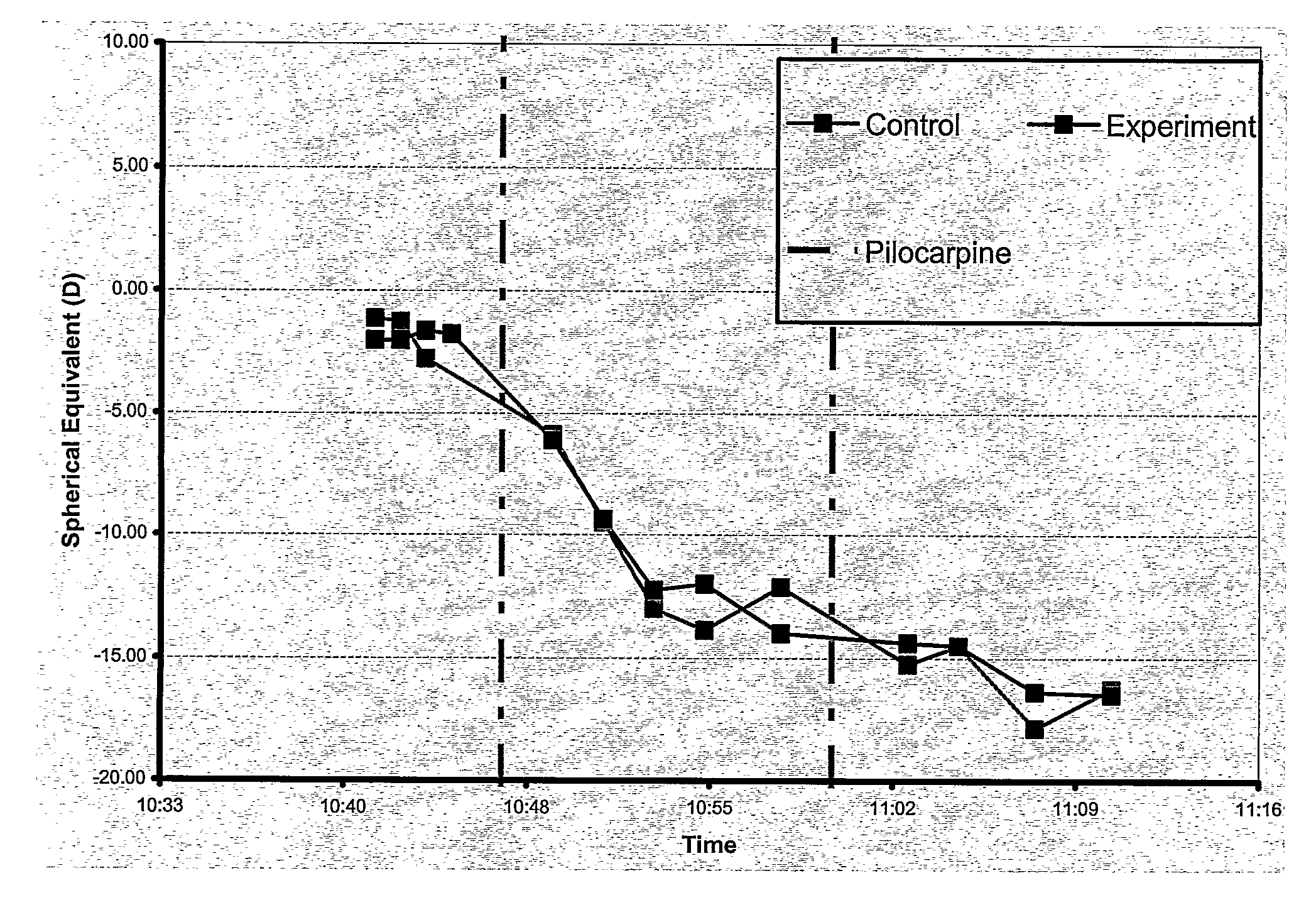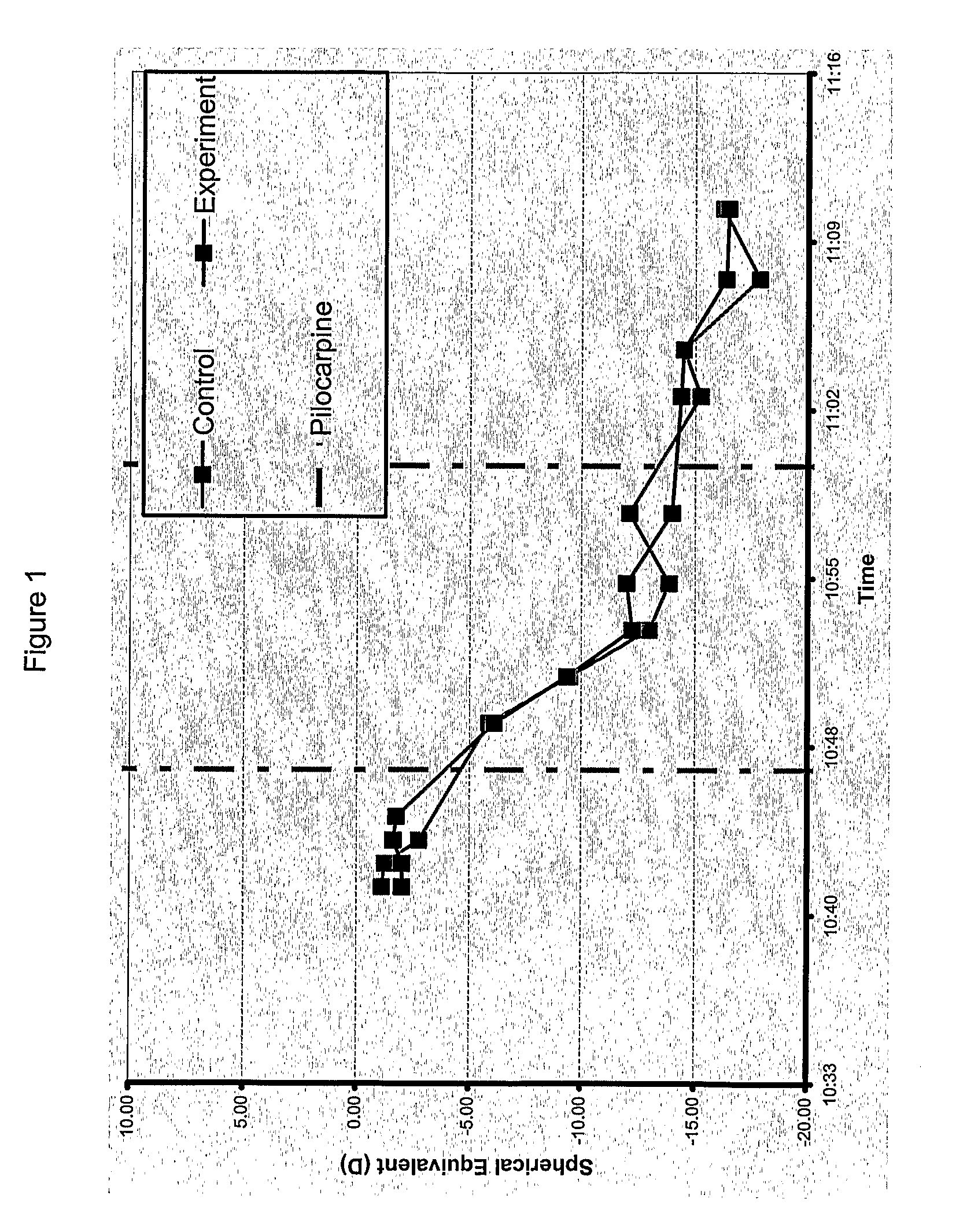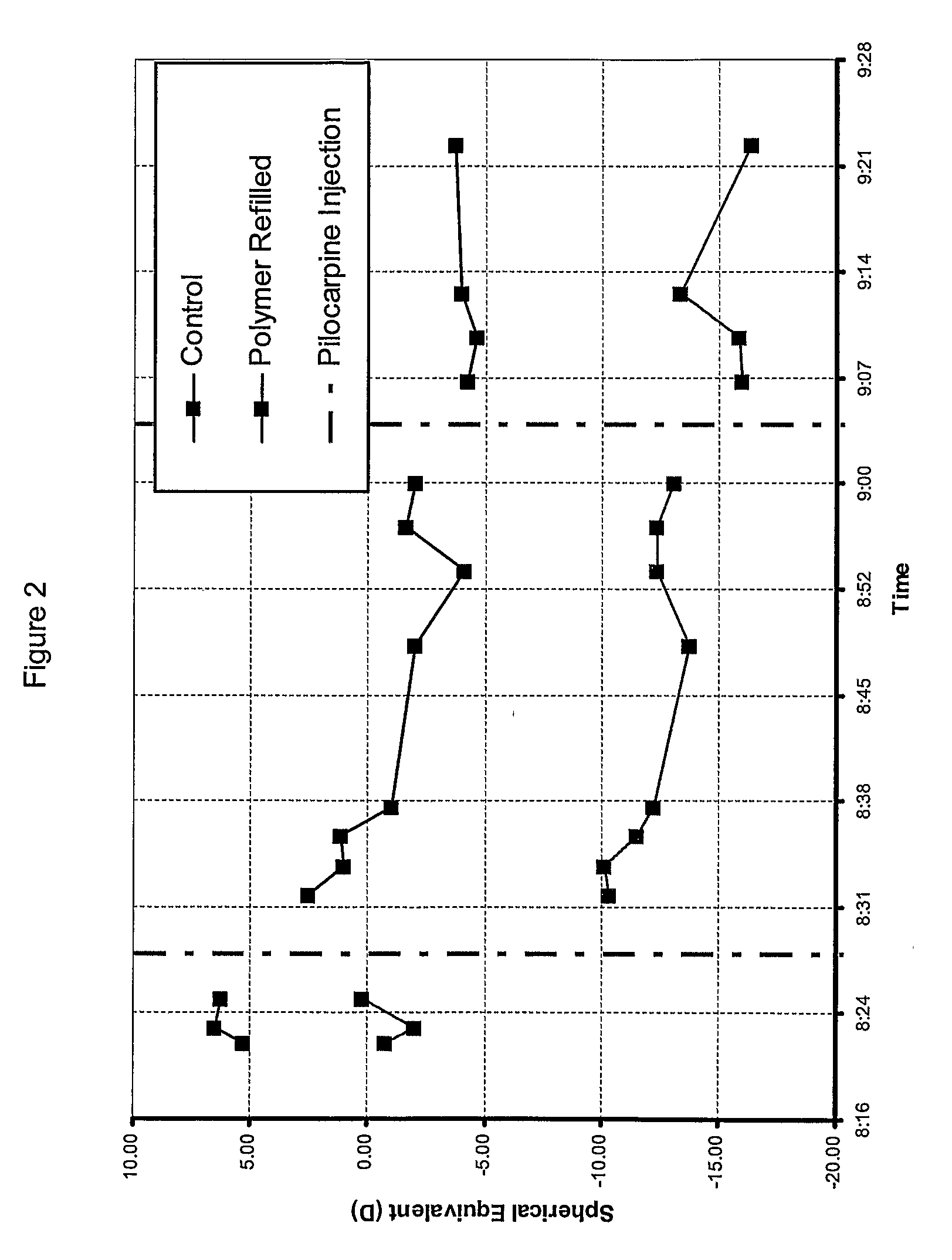Eye treatment
a new type of eye treatment technology, applied in the field of eye treatment, can solve the problems of induced hyperopia in all animals, and achieve the effect of improving the visual field and improving the visual field
- Summary
- Abstract
- Description
- Claims
- Application Information
AI Technical Summary
Benefits of technology
Problems solved by technology
Method used
Image
Examples
example 1
[0083]A 47 year old patient presents to an eye-care practitioner (e.g. an ophthalmologist) complaining of difficulty with reading and other near visual tasks, such as threading a needle. The distance refractive state of the patient is measured using conventional methods of refraction, such as subjective refraction (employing e.g. a letter chart and trial frame and trial-lenses of various powers) or an objective refraction, such as retinoscopy, or a more modern auto-refractometer as understood by eye-care practitioners. It is found that the patient is emmetropic (i.e. does not require a visual correction to see clearly at distance). However, on near refraction (for example, using a near-point chart, or dynamic retinoscopy), it is found that the patient is experiencing the near vision problems of an early presbyope, resulting from the hardening crystalline lens. In order to treat the presbyopia the patient undergoes a lens refilling operation in order to re-establish a lens (an IOL) w...
example 2
[0088]Following refraction assessment as described above, it is found that a 62 year old patient has +7.00D of hyperopia. Following slit-lamp biomicroscopic examination, it is observed that the patient also has cataractous changes in the lens which are affecting her vision. Due to the age of the patient, it is deduced that her accommodative amplitude would be very low, being less than about 1D of accommodation. Given the cataractous and advanced presbyopic state of the lens, a lens refilling operation is conducted to replace the cataractous lens with a clear IOL, to restore accommodation to the lens by using a material with a suitable modulus and to correct the hyperopia by selecting a material having an appropriate refractive index.
[0089]The refractive index of the material for use in the injectable IOL is calculated in accordance with the present invention. First, an NRRI of 1.427 is selected. Next, the RICF is determined. By referencing the graph of FIG. 6, it can be seen that fo...
PUM
| Property | Measurement | Unit |
|---|---|---|
| refractive index | aaaaa | aaaaa |
| refractive index | aaaaa | aaaaa |
| refractive index | aaaaa | aaaaa |
Abstract
Description
Claims
Application Information
 Login to View More
Login to View More - R&D
- Intellectual Property
- Life Sciences
- Materials
- Tech Scout
- Unparalleled Data Quality
- Higher Quality Content
- 60% Fewer Hallucinations
Browse by: Latest US Patents, China's latest patents, Technical Efficacy Thesaurus, Application Domain, Technology Topic, Popular Technical Reports.
© 2025 PatSnap. All rights reserved.Legal|Privacy policy|Modern Slavery Act Transparency Statement|Sitemap|About US| Contact US: help@patsnap.com



